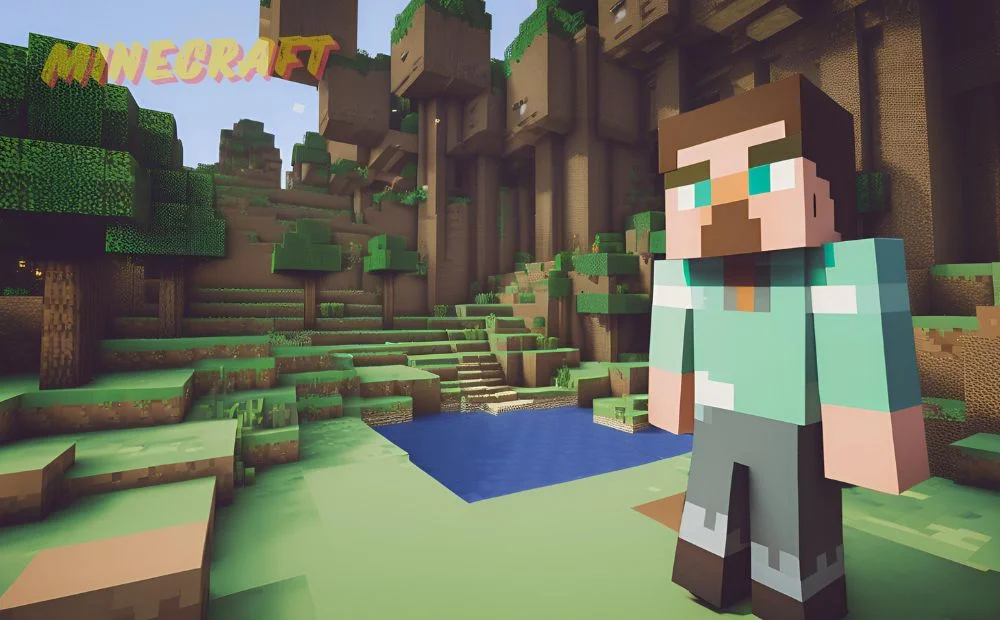The world of Minecraft: Bedrock Edition (2011) is a vast and vibrant one, teeming with creative possibilities and endless exploration. A crucial part of this experience is the visual language that draws players in and keeps them engaged. This language is embodied in the game’s icons and banners, which serve more than just aesthetic purposes. They act as guides, providing instant information and setting the tone for the diverse elements within the Minecraft universe.
Minecraft: Bedrock Edition (2011) game icons banners are strategically designed to be instantly recognizable. They use a combination of simple shapes, bold colors, and clear iconography to communicate information to players at a glance effectively. Whether it’s identifying a valuable resource or recognizing a dangerous mob, these visual cues play a vital role in enhancing the gameplay experience.
A World of Information at a Glance: The Power of Icons in Minecraft: Bedrock Edition (2011)

Icons in Minecraft: Bedrock Edition (2011) are the workhorses of visual communication. They are small pictures that represent items, blocks, mobs, and even actions within the game. These icons are designed to be universally understood, regardless of language barriers. For example, the image of a pickaxe instantly conveys the concept of mining, while a fiery red icon signifies danger or damage.
The simplicity of Minecraft: Bedrock Edition (2011)’s icons makes them incredibly effective. They are instantly recognizable, even at a small scale, allowing players to quickly grasp the information they need without breaking immersion. This is particularly important in the fast-paced world of Minecraft, where quick decision-making can be the difference between success and failure.
Bold and Beautiful: Banners in Minecraft: Bedrock Edition (2011)
Banners in Minecraft: Bedrock Edition (2011) serves a dual purpose. They can be used decoratively, allowing players to express their creativity and personalize their in-game world. Banners can be crafted using various colors and patterns, resulting in a vast array of designs. This level of customization allows players to create unique emblems for their builds, teams, or even personal branding within the game.
Beyond decoration, banners also hold functional value in Minecraft: Bedrock Edition (2011). They can be placed on blocks and used to mark territory, identify locations, or even create a system of visual communication. For instance, a player might place a banner with a specific symbol near a hidden chest to indicate its contents. This adds another layer of depth and strategy to the gameplay experience.
The Art of Design: How Minecraft: Bedrock Edition (2011) Icons and Banners Captivate Players
The success of Minecraft: Bedrock Edition (2011)’s icons banners lies not just in their functionality but also in their artistic design. The game’s developers have mastered the art of creating visuals that are both informative and aesthetically pleasing. The pixelated art style is a core part of Minecraft’s charm, and the icons and banners seamlessly integrate into this visual identity.
The use of color in Minecraft: Bedrock Edition (2011)’s icons and banners is particularly noteworthy. Bold and vibrant colors are used to create a sense of distinction and hierarchy. For example, valuable resources like diamonds might be represented by bright blue icons, while dangerous mobs might use fiery red hues. This color-coding system makes it easy for players to identify important elements within the game world.
The Enduring Appeal: Why Minecraft: Bedrock Edition (2011)’s Icons and Banners Remain Relevant
Even after years of existence, Minecraft: Bedrock Edition (2011)’s icons banners continue to hold significant value. Their simple yet effective design language ensures that they remain universally understood by players of all ages and backgrounds. This timeless quality has played a vital role in the game’s enduring popularity.
The constant introduction of new content in Minecraft: Bedrock Edition (2011) necessitates the creation of new icons and banners. This ongoing process ensures that the game’s visual language remains fresh and relevant. It also adds an element of discovery for players, as they encounter new visual cues that represent the latest additions to the Minecraft universe.
Conclusion
Minecraft: Bedrock Edition (2011)’s icons and banners are more than just decorative elements. They are a powerful tool for communication, serving as a visual language that enhances the gameplay experience. Their simplicity, effectiveness, and artistic design all contribute to the enduring appeal of this iconic game. So, the next time you boot up Minecraft: Bedrock Edition (2011), take a moment to appreciate the artistry and functionality embedded within its seemingly simple icons and banners.





